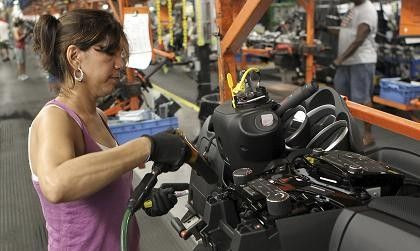Labor Day 2011: Simply, U.S. Needs Millions of New Jobs

The United States enters this Labor Day faced with many problems, and the most serious of which concerns jobs -- the state of working America is in its most trying condition in generations.
The U.S. unemployment rate is 9.1 percent -- it held steady in August during a month when the U.S. economy created no new net jobs.
However, the above metric, as unacceptably high as it is, does not tell half the jobs deficit story. The underemployment rate, which includes those part-time employees who want full-time employment but who can't find it, is 16.1 percent.
In other words, roughly 1 of 6 Americans seeking full-time work cannot find it.
Long-Term Unemployment Rate Is Also High
Equally distressing, the percent of Americans who have been out of work for more than six months has hovered at/near 45 percent for more than a year. The standard U.S. employment rate has been at/near 8.8 percent for a staggering 28 months.
What's more, from a jobs metric standpoint, the statistics are just as serious. The Economic Policy Institute, a liberal Washington, D.C.-based think tank, notes that there are 6.8 million fewer jobs today than when the recession started in December 2007.
Add the 4.3 million jobs needed to keep pace with the growth in the working age population since December 2007, and the result is a huge 11.1-million job deficit.
To show investors and others how large that 11.1-million job deficit is, even if the U.S. economy created 400,000 jobs per month-- above the 300,000-plus job growth average for the Roaring 90s, a period of fantastic job growth -- it would still take until mid-2014 to eliminate the jobs deficit.
However, as most investors know, the U.S. economy is not creating any where near 400,000 jobs per month. Since the economic recovery started in mid-2009, the economy has added an average of 144,000 jobs per month -- a pace that would not eliminate the jobs deficit until 2026 -- 15 years from now.
Wage Growth Has Lagged
In addition to the debilitating impact on families, communities, and the U.S. economy, the dearth of jobs has also affected those currently employed, as one might sense. In part due to less bargaining power and fewer alternate job opportunities, wage growth has been slow during the financial crisis era -- it's run at its slowest pace in the past two years than at any time in the past 30 years, the EPI said.
The causes of the jobs deficit are many and complex. Some of the shortage stems from the loss of housing construction jobs, which declined by a staggering 3 million jobs after the housing bubble burst in 2007.
Also, part of the jobs deficit stems from the transfer of jobs to lower-cost production centers outside the United States, and part of it stems from automation: technology and automated process have enabled many companies to do more with the same number of employees, or even with fewer employees. The upside of that technology has been increased productivity per employee and higher corporate earnings, but the downside, at least short-term, has been fewer jobs than would exist absent that technology.
Job Market/Economic Analysis: Many if not most of the jobs transferred to other countries are not returning to the states, hence the focus, economists generally agree, has to be on finding new engines of growth -- new sectors that will create millions of new jobs based in the United States.
The good news is, historically, the U.S. economy has shown a remarkable ability to adapt and renew itself -- it has displayed a flexibility that literally has led to new value-added job sources -- which triggered new eras of GDP growth and job growth: the retooling in the early 1980s after the stagnant 1970s is one example; the information technology and business boom in the 1990s triggered by the introduction of the Internet and other technologies is another example.
However, the hard facts news is that the U.S. economy faces perhaps its biggest challenge as a result of globalization: the sheer size of the job loss from outsourcing to overseas markets implies that millions of Americans will have to re-train to obtain the news skills needed in these new commerce areas.
That large-scale job training also implies a large amount of dislocation -- which places even more importance on the social safety net.
The U.S. has the resources to keep that social safety net in place, and to assist with job re-training. Unfortunately, however, the mood in the U.S. Congress right now is toward austerity -- shortening and eliminating unemployment compensation benefits, retraining/education grants, and other social supports: that has to change to a philosophy advocating a smarter social safety net to enable a less-rough transition to the new 21st century U.S. economy.
© Copyright IBTimes 2024. All rights reserved.





















